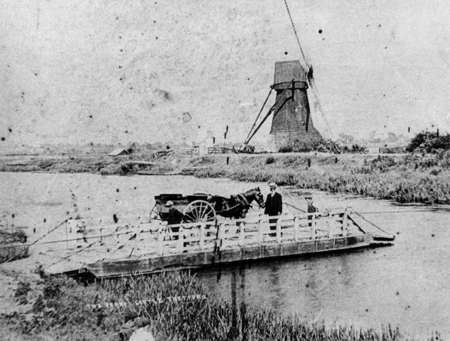|
Ælfwaru
Ælfwaru (died 27 February 1007) was an Anglo-Saxon noblewoman, who bequeathed her lands to churches such as Ely, and Ramsey. Chroniclers, writing in the 12th century, transcribed such bequests, from the original cyrographs. Ælfwaru's cyrograph has not survived. Ælfwaru's father, Æthelstan Mannessune, had two sons: Eadnoth, and Godric; and two daughters: Ælfwaru, and Ælfwyn. Lineage Her lineage is unknown. However, modern historians have constructed a plausible family tree. Ælfwaru is believed to be one of two daughters to Æthelstan Mannessune (d. 986), the other being Ælfwyn, abbess of Chatteris. If this is the case, Ælfwaru's brothers were St Eadnoth the martyr (d. 1016), first abbot of Ramsey, and Godric (d.1013).Brooks (ed.) p. 51 Death Ælfwaru is believed to have died on, or at least her obituary recorded for, 27 February.MS Cambridge, Trinity College O. 2.1 ''Liber Benefactorum Ecclesiae Ramesiensis'' records the year, 1007Ramsey Cartulary ... [...More Info...] [...Related Items...] OR: [Wikipedia] [Google] [Baidu] |
Æthelstan Mannessune
Æthelstan Mannessune (died c. 986) was a landowner and monastic patron in late 10th-century Anglo-Saxon England, coming from a family of secularised priests. Remembered by Ely Abbey as an enemy, he and his family endowed Ramsey Abbey and allegedly provided it with a piece of the True Cross. His children became important in their own right, one of them, Eadnoth, becoming Abbot of Ramsey and Bishop of Dorchester, and another becoming abbess of Chatteris nunnery. Origins and reputation Æthelstan came from a family of secularised priests in the Fens of the eastern Danelaw.Wareham, "Family", p. 50 He seems to have come from the Isle of Ely. His father, Manne, had owned land at Chatteris and Wold, both on Ely, while the ''Libellus Æthelwoldi Episcopi'' ("Little Book of Bishop Æthelwold") associated a priest named Manne with land at Haddenham, a place only a few miles distant. Æthelstan's recorded lands lay in Cambridgeshire, Huntingdonshire and Bedfordshire, with "outlying" arte ... [...More Info...] [...Related Items...] OR: [Wikipedia] [Google] [Baidu] |
Eadnoth The Younger
Eadnoth the Younger or Eadnoth I was a medieval monk and prelate, successively Abbot of Ramsey and Bishop of Dorchester. From a prominent family of priests in the Fens, he was related to Oswald, Bishop of Worcester, Archbishop of York and founder of Ramsey Abbey. Following in the footsteps of his illustrious kinsman, he initially became a monk at Worcester. He is found at Ramsey supervising construction works in the 980s, and around 992 actually became Abbot of Ramsey. As abbot, he founded two daughter houses in what is now Cambridgeshire, namely, a monastery at St Ives and a nunnery at Chatteris. At some point between 1007 and 1009, he became Bishop of Dorchester, a see that encompassed much of the eastern Danelaw. He died at the Battle of Assandun in 1016, fighting Cnut the Great. Family Eadnoth the Younger was the son of Æthelstan Mannessune by a kinswoman of Oswald, Bishop of Worcester and Archbishop of York.Wareham, "St Oswald's Family", pp. 49–50 His father came from ... [...More Info...] [...Related Items...] OR: [Wikipedia] [Google] [Baidu] |
Little Thetford
Little Thetford is a small village in the civil parish of Thetford, south of Ely in Cambridgeshire, England, about by road from London. The village is built on a boulder clay island surrounded by flat fenland countryside, typical of settlements in this part of the East of England. During the Mesolithic era, the fenland basin was mostly dry and forested, although subject to salt and fresh water incursions. The marshes and meres of this fenland may therefore have been difficult to occupy, other than seasonally, but there is evidence of human settlement on the island since the late Neolithic Age; a Bronze Age causeway linked the village with the nearby Barway, to the south-east. An investigation, prior to a 1995 development in the village, discovered a farm and large tile-kiln of Romano-British origin; further investigations uncovered an earlier settlement of the Pre-Roman Iron Age. The Roman road Akeman Street passed through the north-west corner of the parish, and the lost 7 ... [...More Info...] [...Related Items...] OR: [Wikipedia] [Google] [Baidu] |
Ælf
An elf () is a type of humanoid supernatural being in Germanic mythology and folklore. Elves appear especially in North Germanic mythology. They are subsequently mentioned in Snorri Sturluson's Icelandic Prose Edda. He distinguishes "light elves" and "dark elves". The dark elves create new blond hair for Thor's wife Sif after Loki had shorn off Sif's long hair. In medieval Germanic-speaking cultures, elves generally seem to have been thought of as beings with magical powers and supernatural beauty, ambivalent towards everyday people and capable of either helping or hindering them. However, the details of these beliefs have varied considerably over time and space and have flourished in both pre-Christian and Christian cultures. Sometimes elves are, like dwarfs, associated with craftmanship. Wayland the Smith embodies this feature. He is known under many names, depending on the language in which the stories were distributed. The names include ''Völund'' in Old Norse, ''WÄ ... [...More Info...] [...Related Items...] OR: [Wikipedia] [Google] [Baidu] |


